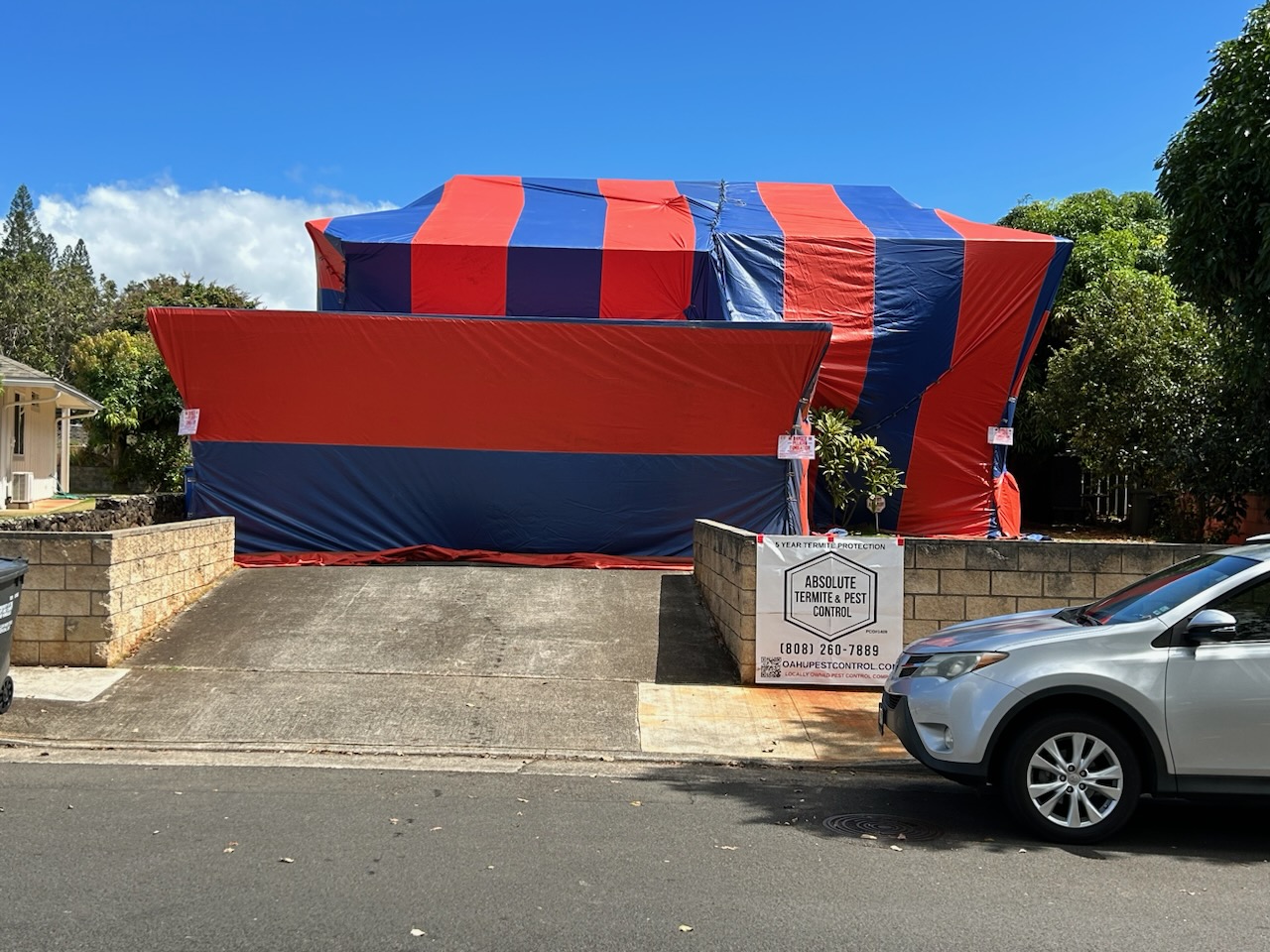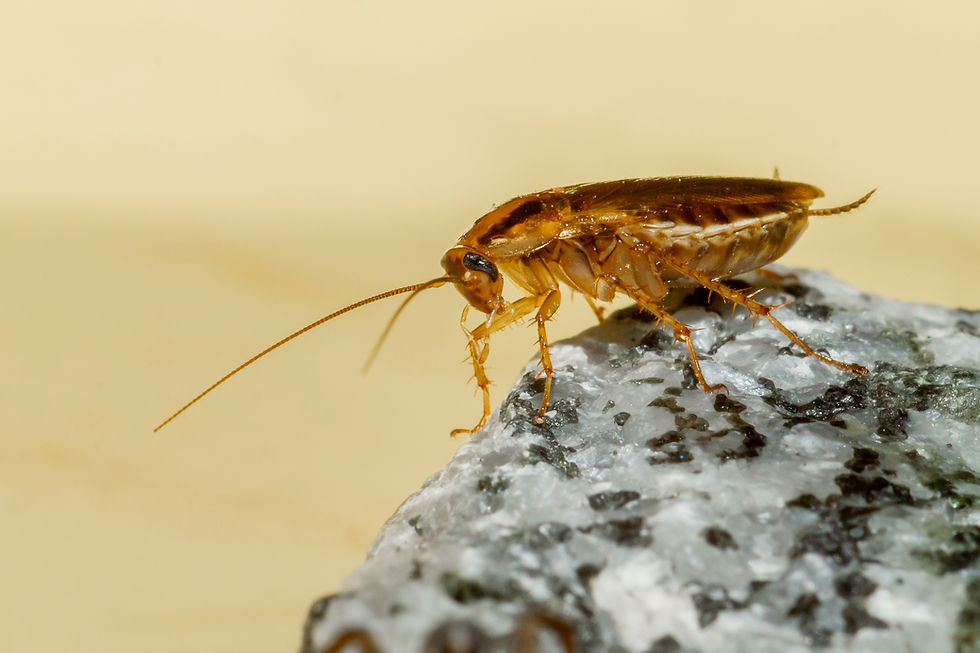Understanding Fleas in a Pet-Free Home What Causes It and How to Handle the Situation
- Absolute Pest Control Hawaii PCO#1409
- Jul 3
- 4 min read
Fleas are small pests that many associate with furry pets. But what if you find these pests in your home, and you don’t own any animals? This situation can be surprising and puzzling. How do fleas make their way into a pet-free home? What steps can you take to get rid of them? In this post, we'll explore the mystery behind fleas in environments without pets and provide straightforward solutions to eliminate these unwanted visitors.
The Life Cycle of a Flea
To comprehend why fleas might invade your home despite the absence of pets, it helps to understand their life cycle. Adult fleas can lay up to 50 eggs each day, which can drop into carpets, furniture, or other surfaces. Interestingly, these eggs can also originate from wildlife, not just pets.
Fleas develop through four stages: egg, larva, pupa, and adult. Depending on environmental conditions like warmth and humidity, fleas can transition from egg to adult in as little as 12 days. A home that is warm and humid can foster a flea population explosion, leading to significant numbers in a very short time. For example, a single pair of fleas can produce over 250,000 offspring in just a few weeks if left unchecked.
Sources of Fleas in a Pet-Free Home
You may be wondering how fleas entered your home. Here are some common sources:
1. Proximity to Infested Areas
Living near a neighbor with pets or in a rural area can elevate your risk. Flea larvae and eggs can hitch a ride on shoes, clothing, or outdoor furniture. If your neighbor's home has a flea problem, you could be unknowingly bringing them into your space.
2. Wildlife Visitors
Wildlife, such as squirrels or raccoons, can introduce fleas. These animals often carry fleas on their fur or in their droppings. Even if they do not come inside, fleas can still migrate in through open doors or windows.
3. Second-hand Items
Buying second-hand furniture, clothing, or rugs can lead to flea infestations. Flea eggs can lie dormant in these items for months, waiting for conditions to be just right to hatch. A study showed that over 30% of second-hand upholstered items were infested with fleas at the time of purchase.
4. Imported Pets
Even if you don’t have pets, visitors with dogs or cats can bring fleas into your home. A friend’s pet might leave behind eggs or larvae, triggering an infestation.
Identifying a Flea Infestation
Recognizing flea signs is essential for effective control. Here are some indicators:
1. Bites on Skin
Flea bites usually appear as small, red, itchy spots, often clustered around the ankles or lower legs. If you notice unusual itching or red spots on your skin, this may signal a flea issue.
2. Flea Dirt
Flea dirt looks like tiny black specks and consists of flea feces. You can often find it on carpets, rugs, or pets’ sleeping areas. A simple test is to wet a cotton ball and rub the specks; if the residue turns red, it's flea dirt.
3. Distressed Pets
If friends bring pets to visit, observe their behavior. An overly scratchy or uncomfortable pet is often a sign of fleas and can lead to them spreading through your home.
4. Spotting Adult Fleas
The most telling sign of an infestation is catching sight of an adult flea. These tiny insects are about 1/8 inch long and can jump up to 7 inches high, making them easy to overlook.
How to Combat Fleas in Your Home
Once you've confirmed fleas are present, it's critical to act quickly. Here’s how to effectively combat the problem:
1. Clean Your Space
Start with a thorough vacuuming of all carpets, rugs, and upholstered furniture. Vacuuming helps remove adult fleas, eggs, and larvae. Dispose of the vacuum bag or empty the canister outside immediately after cleaning to prevent reinfestation.
2. Wash Bedding and Fabrics
Wash all bed linens, curtains, and any affected clothing in hot water. Temperatures above 130°F can kill fleas at all life stages, making this step crucial for your flea-fighting strategy.
3. Use Flea Treatments
Consider using indoor flea treatments or insecticides. Look for products that target multiple flea life stages, as this helps break the reproduction cycle. Many consumers report a 90% reduction in flea populations when using these products regularly.
4. Seal Cracks and Crevices
Inspect your home for small openings and seal them. This preventive measure can help keep future infestations at bay, reducing the chances of wildlife or other pets bringing in fleas.
5. Consult Professionals
If fleas persist despite your efforts, seek help from pest control professionals. They have access to powerful treatments that can provide long-term solutions to your flea problem.
Preventing Future Infestations
After tackling the immediate flea issue, it's crucial to take steps to prevent future infestations. Here are some strategies:
1. Regular Cleaning
Keep vacuuming carpets and washing fabrics on a regular schedule. Consistency breaks the flea lifecycle and helps maintain a flea-free home.
2. Inspect Second-hand Items
Always check used items for signs of fleas or flea dirt before bringing them home. This simple step can save you from a potential problem.
3. Outdoor Precautions
Maintain your yard by keeping it tidy. Clear away brush and debris to deter wildlife, as they may carry fleas into your home.
4. Be Cautious with Visitors
If you host friends or family with pets, kindly ask them to check their animals for fleas before entering your home. Preventive conversations can go a long way.
Protecting Your Home from Fleas
Fleas in a pet-free home may come as a shock, but learning how they enter your space is the first step toward effective management. Understand that conditions like wildlife presence, second-hand items, or even visiting pets all play a role.
By regularly cleaning, inspecting items, and knowing how to treat and prevent infestations, you can maintain a comfortable home free from fleas. Fleas may be a nuisance, but you can gain control with the right knowledge and actions.

Stay vigilant and informed, and you’ll protect your home from these unwelcome guests.











Comments